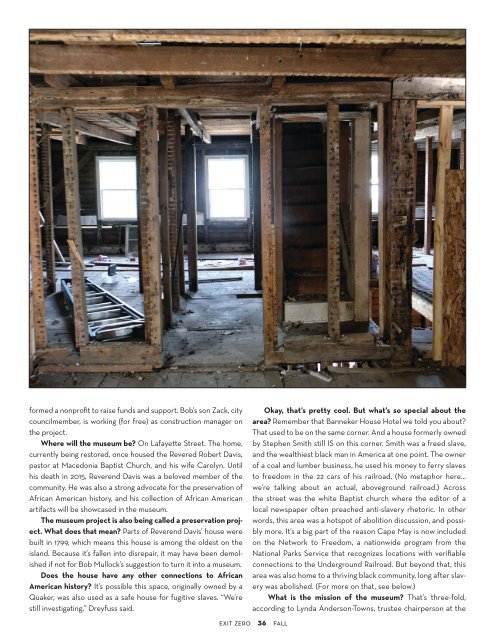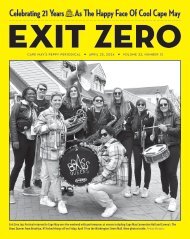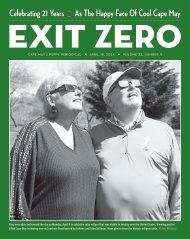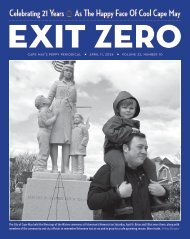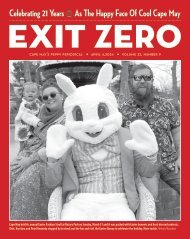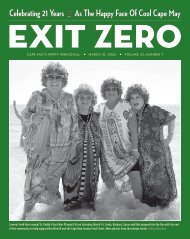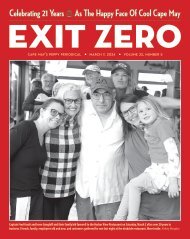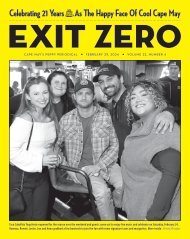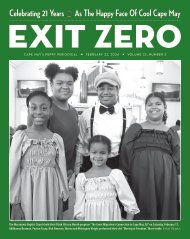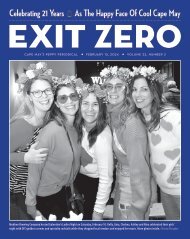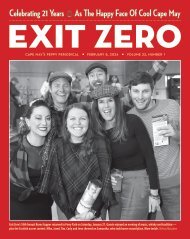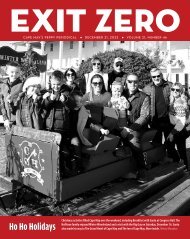Create successful ePaper yourself
Turn your PDF publications into a flip-book with our unique Google optimized e-Paper software.
formed a nonprofit to raise funds and support. Bob’s son Zack, city<br />
councilmember, is working (for free) as construction manager on<br />
the project.<br />
Where will the museum be? On Lafayette Street. The home,<br />
currently being restored, once housed the Revered Robert Davis,<br />
pastor at Macedonia Baptist Church, and his wife Carolyn. Until<br />
his death in 2015, Reverend Davis was a beloved member of the<br />
community. He was also a strong advocate for the preservation of<br />
African American history, and his collection of African American<br />
artifacts will be showcased in the museum.<br />
The museum project is also being called a preservation project.<br />
What does that mean? Parts of Reverend Davis’ house were<br />
built in 1799, which means this house is among the oldest on the<br />
island. Because it’s fallen into disrepair, it may have been demolished<br />
if not for Bob Mullock’s suggestion to turn it into a museum.<br />
Does the house have any other connections to African<br />
American history? It’s possible this space, originally owned by a<br />
Quaker, was also used as a safe house for fugitive slaves. “We’re<br />
still investigating,” Dreyfuss said.<br />
Okay, that’s pretty cool. But what’s so special about the<br />
area? Remember that Banneker House Hotel we told you about?<br />
That used to be on the same corner. And a house formerly owned<br />
by Stephen Smith still IS on this corner. Smith was a freed slave,<br />
and the wealthiest black man in America at one point. The owner<br />
of a coal and lumber business, he used his money to ferry slaves<br />
to freedom in the 22 cars of his railroad. (No metaphor here…<br />
we’re talking about an actual, aboveground railroad.) Across<br />
the street was the white Baptist church where the editor of a<br />
local newspaper often preached anti-slavery rhetoric. In other<br />
words, this area was a hotspot of abolition discussion, and possibly<br />
more. It’s a big part of the reason Cape May is now included<br />
on the Network to Freedom, a nationwide program from the<br />
National Parks Service that recognizes locations with verifiable<br />
connections to the Underground Railroad. But beyond that, this<br />
area was also home to a thriving black community, long after slavery<br />
was abolished. (For more on that, see below.)<br />
What is the mission of the museum? That’s three-fold,<br />
according to Lynda Anderson-Towns, trustee chairperson at the<br />
exit zero 36 fall


